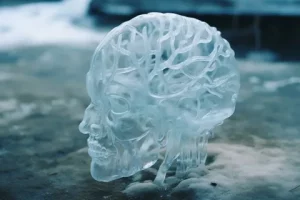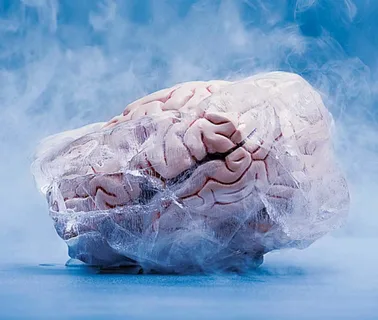Delving into the Phenomenon
Brain freeze, also known as ice cream headache or sphenopalatine ganglioneuralgia in medical terms, is a sudden and intense headache caused by the rapid consumption of cold foods or beverages. While it may last only for a few seconds to a minute, its occurrence can be quite discomforting. In this article, we will delve deep into the science behind brain freeze, uncovering its mechanisms, triggers, and potential remedies.
The Physiology of Brain Freeze
Vascular Response
When cold substances come into contact with the roof of the mouth, the sudden drop in temperature triggers a vascular response. Blood vessels in the palate constrict and then rapidly dilate, causing a rush of blood to the brain. This sudden influx of blood into the vessels of the brain is believed to be the primary cause of brain freeze.
Activation of Nerves
The trigeminal nerve, responsible for sensation in the face, is thought to play a significant role in the development of brain freeze. As the cold stimulus is detected by nerve endings in the mouth and throat, signals are sent to the brain through the trigeminal nerve. This activation of nerve fibers is believed to contribute to the sensation of pain experienced during a brain freeze.

Triggers and Risk Factors
Cold Foods and Beverages
Brain freeze commonly occurs when consuming cold foods or beverages such as ice cream, frozen drinks, or slushies. The rapid consumption of these items, particularly when they come into direct contact with the roof of the mouth, increases the likelihood of experiencing a brain freeze.
Individual Sensitivity
Some individuals may be more prone to brain freeze than others due to variations in their physiological responses. Factors such as genetics, age, and overall sensitivity to cold stimuli can influence the frequency and severity of brain freeze episodes. Explore More About (High Heart Rate)
Alleviating Brain Freeze
While brain freeze typically resolves on its own within a minute or so, there are several strategies that may help alleviate discomfort during an episode:
1. Warmth
Pressing the tongue or thumb against the roof of the mouth can help warm the area and alleviate the constriction of blood vessels, easing the intensity of the brain freeze.
2. Drinking Warm Fluids
Consuming warm liquids, such as tea or warm water, can help counteract the cold stimulus and normalize the temperature in the mouth and throat, reducing the duration of the brain freeze.
3. Slowing Down Consumption
Eating or drinking cold substances at a slower pace can reduce the intensity of the brain freeze by giving the body more time to adjust to the temperature change.

Remedies for Brain Freeze
| Remedy | Description |
|---|---|
| Warmth | Applying warmth to the roof of the mouth to alleviate blood vessel constriction. |
| Drinking Warm Fluids | Consuming warm liquids to counteract the cold stimulus and normalize mouth temperature. |
| Slowing Down Consumption | Eating or drinking cold substances at a slower pace to allow the body to adjust gradually. |
Conclusion
Brain freeze is a temporary and often harmless phenomenon that occurs due to the rapid consumption of cold foods or beverages. While its exact mechanisms are not fully understood, the vascular response and activation of nerves are believed to play key roles in its development. By understanding the science behind brain freeze and implementing simple strategies to alleviate discomfort, individuals can enjoy their favorite cold treats without the fear of an icy headache.




